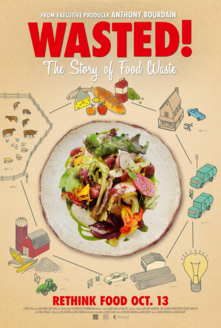Prepare for the FY 2018 Farm to School Grant RFA NOW
We
plan to release the USDA Farm to School Grant RFA soon, but there’s no
need to wait to start preparing. Here are five ways to get a jump start:
1. Explore the Local Food
Compass Map.
- On
the site, you’ll find a map of all of USDA and other federal departments’ investments
in local and regional food systems. You can search by state and type of project.
- This
is a great way to find out what is going on in your state and connect with
potential partners.
2. Check out
the USDA Farm to
School Census!
In 2015, USDA conducted a nationwide Farm to
School Census, surveying over 18,000 school districts to determine how many
schools currently purchase local foods. The Farm to School Census establishes a national
baseline of farm to school activities happening across the country.
In school year 2013-2014, school
districts purchased nearly $800 MILLION in local food from farmers, ranchers,
fishermen, and food processors and manufacturers. That’s a 105 percent increase over the $386 million of local food purchased
in the 2011-2012 school year when the first Census was conducted. 46 percent of school districts report that they will buy even more local foods in future school
years.
While there are many
sources of community, health, and agricultural data that you can use to craft a
compelling application, combining the Census with those sources can help you
paint the picture of what farm to school looks like in your unique community.
3. Read the FY 2017 Farm to School Grant Request for Applications.
While we have made
some changes to the RFA for the FY 2018 cycle, the main goals and requirements
will remain the same. Familiarize yourself with the FY 17 RFA,
Frequently Asked Questions, and sample grants. Be sure to check out the project descriptions of past
grantees too!
4. Dig
into the paperwork.
To submit a proposal, your organization must have
several registrations. These registrations often become an issue when
applicants wait to complete them. You can start the process on all of these
systems NOW.
- Obtain
a Data Universal Numbering
System (DUNS) Number - There
is no fee and the registration may take several days.
- Register with System for Award Management (SAM) - There is no fee and verification can take 3-5
business days after your registration is submitted.
- Create a grants.gov account - There is no fee and registration takes between
3-5 business days.
5. Build your
team.
Reach out to potential
partners and start having conversations now about how you might collaborate on
a grant proposal.
- Do you have your
school nutrition director on board?
- Do you have
buy-in from the school administration and/or teachers?
- Are there
non-profits in the community that can support a project?
- Who will do your
evaluation?
If you have completed some of this prep work, you’ll be
ready to dive into proposal writing. Running through these steps will set you
up for success when the FY 2018 Request for Applications goes live.

Upcoming Webinars and New Resources
Team Up for Food Safety!
Date: Thursday, September 28, 2017 from 3-4 pm ET
September Is National Food Safety Education Month. This year's theme focuses on building a culture of food safety. Providing food safety training is part of building a strong foundation of food safety culture in your operation. Join us for September’s webinar, Team Up for Food Safety! to learn about best practices in food safety and the abundance of free training and resources offered by the Institute of Child Nutrition and USDA’s Food and Nutrition Service, Office of Food Safety for Child Nutrition Professionals working in school nutrition and child care settings. Presented by the Institute of Child Nutrition.
Webinar Panelists:
Shelly Mohr, Food Service Director, Tipton Community School District, Tipton, Iowa
Liz Dixon, MS, Education and Training Specialist, Institute of Child Nutrition
Tina Hanes, RD, RN, Food Safety Specialist, United States Department of Agriculture, Food and Nutrition Service, Office of Food Safety

|
Wasted:
The Story of Food Waste
This film aims to change the way people buy,
cook, recycle, and eat food. Through the eyes
of chef-heroes like Bourdain, Dan Barber, Mario Batali, Massimo
Bottura, and Danny Bowien, audiences will see how the world’s most influential chefs
make the most of every kind of food, transforming what most people consider
scraps into incredible dishes that create a more secure food system.
|
|
 |


Chef Ann Foundation Announces School Food Institute
The Chef Ann Foundation (CAF) carries out their vision by actively supporting school districts through grant programs and by providing tried and tested tools for school food change and are well known for The Lunchbox.
Their newest project, School Food Institute, gives school food service professionals and childhood nutrition advocates the in-depth training, operational skills, and strategic vision necessary to make school food fresh, healthy, and sustainable. Online courses give you a front row seat in Chef Ann Cooper’s classroom, where you can learn directly from a leader in school food change on how to transition school meal programs to scratch-cooked operations that provide real, healthy food to kids at school every day.
|

DC Greens First Annual Regional School Garden Summit
Date: October 14, 2017
DC Greens will host the first annual Regional School Garden Summit. The goal of the Summit is to nurture the emerging regional network of nonprofits, schools, and government agencies interested in capacity and network building around school gardens by providing a space to learn, share best practices and make new connections.
|
|
 |


Farm to Institution New England has a new blog series!
Farm
to Institution New England (FINE) just launched a new six-part blog series
called Measuring Up: Demonstrating the Impact of Farm to
Institution through Metrics. Measuring Up is
designed to provide a data-driven account of the farm to institution landscape
in New England. Did you know there are 4,628 K-12 schools, 210 colleges and
universities with dining services, and 256 hospitals in New England? In total,
these institutions feed an estimated 3.8 million people per day.
Measuring Up draws
from two years of work by the FINE metrics team dedicated to understanding key
indicators for farm to institution success across schools, colleges, and
hospitals. Throughout the series, FINE will delve into these key indicators and
explore other findings that have been revealed through analysis of both primary
and secondary data. Measuring Up will cover topics such as
definitions of local food, farmer perspectives, institutional food
budgets, local food procurement, the power of institutions to change the food
system, and much more.
Are
you interested in receiving a notification when each article is published
over the next few months? If so, please subscribe: www.farmtoinstitution.org/subscribe-measuring-up
The
following topics will be covered over the course of the six-part series:
- An Introduction to the
New England Farm to Institution Metrics Blog Series
- When, How, and Why to
Define “Local”
- Working Within the
System: Institutional Budgets, Operational Characteristics, and Local
Food Procurement
- Accessing Local
Product: What Products Do Institutions Buy Local & What are the
Barriers to Increasing Local Procurement?
- Producer Perspectives:
Who is Providing Institutional Product?
- The Power of
Institutions to Change the Food System: Impacts & Data-Driven
Recommendations for Achieving Success
|

 Grow Appalachia collaborates with Owsley County, Kentucky Farm to School Program
As of 2016, Owsley County High School has grown 8,094 pounds of food on their school farms with funds from Grow Appalachia. The majority of the produce raised on the school farm goes directly into the high school cafeteria’s meals. “The school and FFA and the garden have a unity. What we grow, the school likes to buy off of us to kind of show appreciation and show that they support us. So it’s used in the lunchroom,” said Faith Duff, Owsley County High School graduate and summer farm intern. When asked how it felt to know the food she grew was used in the school cafeteria, Faith responded, “I felt proud. It takes a lot of hard work, getting it from a seed and having to manage it all the way up, because it takes a while for stuff to grow. It was something to be proud of, that’s for sure.”
Students and recent graduates of Owsley County High School have the opportunity to receive a paid internship during the summer working on the school’s farm. Internship stipends are supported by Grow Appalachia, and this year’s crop of interns know the value of the work they’re doing. “These are life lessons that I learn every day. And I know that I’m going to use them in my future. We work at the Farmers Market sometimes, which is selling, and that teaches you money and business and talking to people, which you can always use, because you always have to use communication. Just how to grow stuff and manage it. Time management is a big thing here, so it’s a good experience,” said Faith.
As for the farm internship program, “Without Grow Appalachia, we wouldn’t have this. We hire students, it gives them their first chance at a job. It teaches them so many occupational skills, employability skills, that they’re going to need no matter what they’re going to do. And that’s important, especially in this community where these students don’t have a lot of opportunity for jobs. They can’t get that experience anywhere else,” said Candrea.
Owsley County High School’s Grow Appalachia program has also recently expanded to partner with community families to support small-scale home gardens and a community garden on-site. From the classroom to the backyard, from the farm to the cafeteria, Owsley County High School and Ms. Candrea Bingham are cultivating a healthy future for their community.
|

|